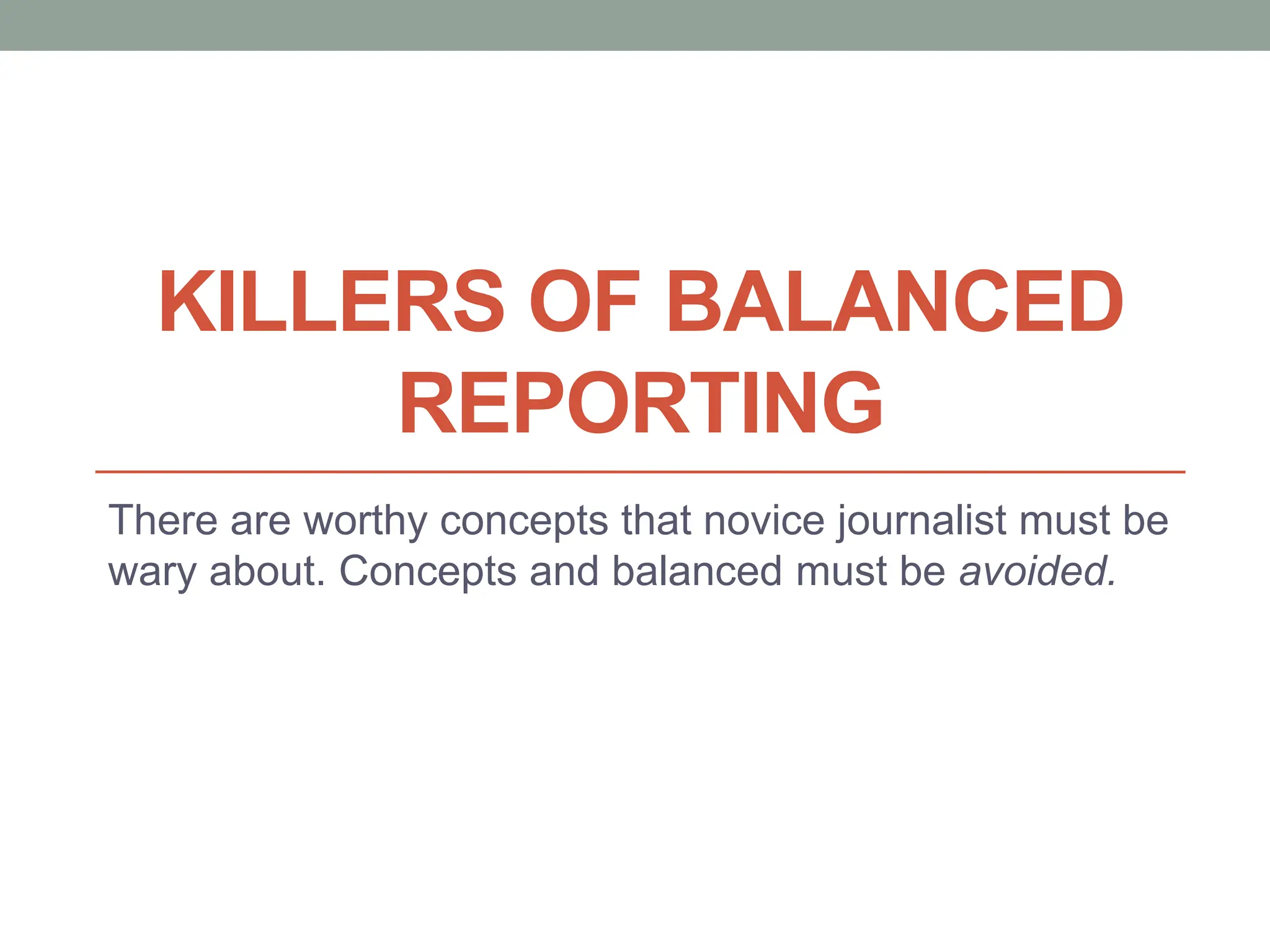This document discusses various types and concepts of journalism that should be avoided by novice journalists, including:
- Yellow journalism, which sensationalizes stories and uses eye-catching headlines rather than well-researched news.
- Advocacy journalism, which supports a specific viewpoint rather than remaining neutral.
- Editorializing, where the reporter gives their own opinion rather than just reporting the facts.
It also covers concepts like new journalism, stylistic journalism, and balanced reporting that journalists should be wary of depending on the story and their role. The document provides examples and definitions of different journalism techniques and styles.
































